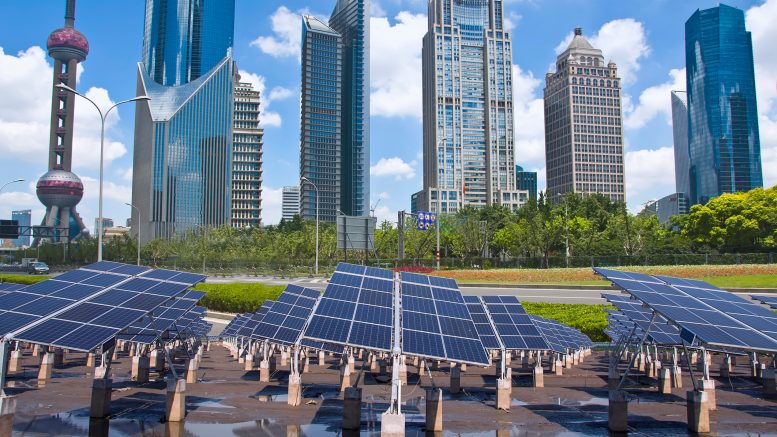China’s journey to carbon neutrality will involve a major shift towards renewable energy, says a team of analysts at London-based business intelligence company CRU.
China has pledged to achieve carbon neutrality by 2060 and peak carbon emissions by 2030. http://www.gov.cn/xinwen/2020-10/29/content_5555864.htm
It is a journey defined by electrification and renewable energy, says the analysts in a white paper sent to MINING.COM. This is particularly the case for aluminium, where renewable power is expected to rise from 16% today to 27% by 2030.
CRU has flagged solar power as having the largest potential for driving growth in the aluminium industry. Hydrogen energy is expected to be widely used in the steelmaking sector, but these technologies are not yet commercially viable for now.
According to the Chinese government’s plan, energy generation from non-fossil fuels will reach 20% by 2025 and 25% by 2030.
The key to ‘peak carbon emissions’, according to CRU, is to reduce and control carbon emissions from both the demand (consumption) and supply-side (production) of the commodities market.
The carbon emissions from steelmaking and aluminium smelting account for 98% of the total carbon emission in the Chinese metals industry. Steelmaking alone accounts for 80% of emissions, with the aluminium smelting industry accounting for 18%. Therefore, it is essential for both steel and aluminium to find an efficient way to reduce carbon emission, says CRU.

The Tesla Gigafactory 3, located in Pudong District, Shanghai, China. Credit: Sky_Blue/iStock.
On the consumption side, decarbonization efforts require building a low-carbon infrastructure on which the economy can operate – this includes smart grids, solar panels, wind turbines, and electric vehicles – infrastructure that requires more aluminium and copper metal volumes.
“We expect consumption of aluminium and copper in low-carbon infrastructure to increase by 40% and 292%, respectively, between 2020 and 2030. Unlike base metals, total steel demand will not be a huge beneficiary of green policies, although there will be increased demand for certain niche metals,” says CRU.
CRU expects Chinese steel demand to peak shortly because the country is approaching a maximum level of sustainable floorspace, which is expected to slow building construction going forward. Greener policies are still not expected to constrain steel demand since the material is still required for housing, infrastructure and transport.
While steel demand slows overall, developments in services and technology sectors suggest a shift in the focus of growth to more advanced steel grades.
According to CRU, aluminium, copper and steel are the critical materials for building solar power and wind power installations.
China’s ambition for new wind and solar energy installation will generate an expected total of 120 million tonnes of steel demand in the next ten years. Although the annual addition is below 2% of total steel demand, this represents a shift in the share of renewables in China’s energy mix from 28% to 47% over the same decade.
Aluminium consumption is around 19,000 t in the construction of per 1 GW solar power generation sets.
CRU estimates the aluminium demand in energy vehicles and the renewable energy sector will grow by 40% to 8.39 million tonnes by 2030 from six million tonnes in 2020. The need for copper, excluding EVs and renewables, would plateau around 2025.
Against a background of policy and environmental support, EV and renewable power’s share of total Chinese copper consumption will expand significantly.
“We forecast that by 2030 around 12% of China copper demand will come from these sectors, up from under 4% currently. These sectors will see further expansions in the following decades,” says CRU.
“It is no exaggeration to say that the future growth of the Chinese copper market is almost entirely contingent on a rapid green transition.”


Be the first to comment on "Chinese peak carbon by 2030 involves a major shift to renewables, says CRU"